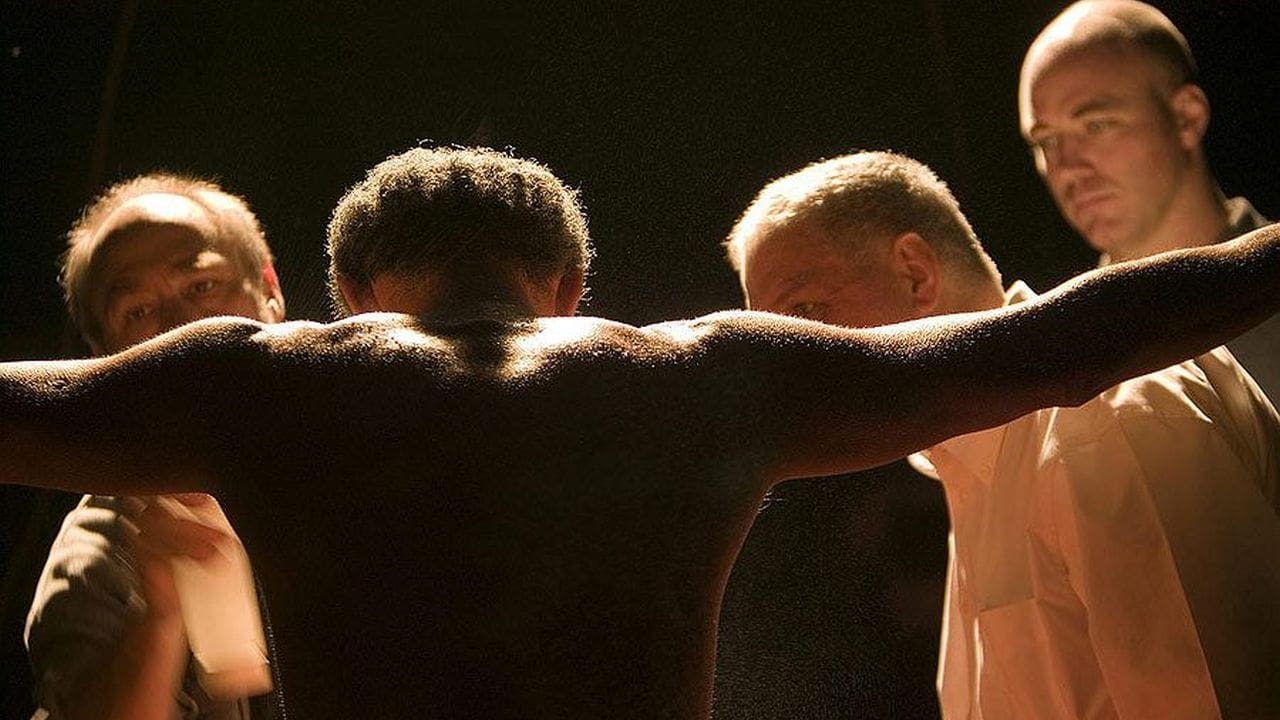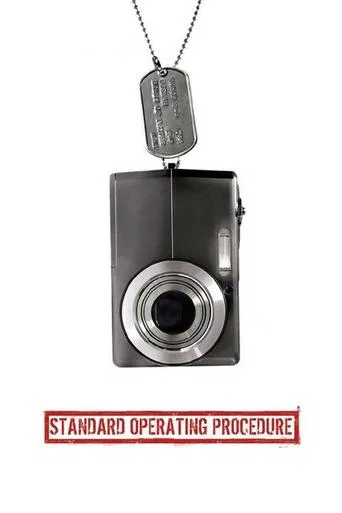

Too bad they don't illustrate the atrocities of the captured scum.I'm surprised Michael Moore's name isn't attached to this one.S1E1 was enough for me. Bail!
... View MoreThe healthy man does not torture others - generally it is the tortured who turn into torturers." Carl Yung Any film that reveals the manipulation of neocons such as Donald Rumsfeld has my full attention and sympathy. Errol Morris's Standard Operating Procedure, however, is not his Fog of War. In the latter, the images and testimonies make their case without much help. In the former, re-enactments, arty images, and sublimating music mitigate the honesty of soldiers testifying in front of the camera about their stupidity and a system that made them torture at the infamous Abu Ghraib.The images of Lynndie England with her thumb up over a detainee's genitals are not new to anyone alert to the Iraq War. The additional images Morris adds do little to further help us understand the motivations of Americans who abused prisoners 4 years ago. The best he and they can offer is the old chestnut that they we ordered to do so. But as in any documentary that allows the camera to linger on its subject for an extended period, eventually the subject will make small, but not insignificant, admissions.In the case of those interviewed and some at staff sergeant and lower now serving time, it seems to come down to Bill Clinton's reason for engaging Monica Lewinsky: because they could. However, the most consistent mea culpas are always that the devil (officers) made them do it. Yet Morris consistently re-enacts, not a favorite companion for me to the documentary, adds Danny Elfman's mysterious X-Files-like music, and most egregiously intersperses slow motion, formalist shots out of place in a documentary, albeit a docudrama in minimum attire.The artful documentary gold standard for me is Alain Resnais' Night and Fog (1960), where the music and narration about the Holocaust are understated, almost flat, to allow the story its own message. When images change from historical black and white to modern color, the irony of blissful forgetfulness is more powerful than any re-enactment or manipulative music.Alex Gibney's Taxi to the Dark Side (2008) may do a better job showing the purpose of Cheney and Rumsfeld to keep soldiers unprepared for their responsibilities, but Morris has succeeded in providing further original images that tell the truth we should never forget.
... View MoreStandard Operating Procedure is a very disturbing documentary. The music and the images allow us to understand the prison and to see what went on in the prison. The clear context of the crimes against humanity that is so off putting and mainly off camera is contrasted with inviting film work that draws us into this story. There are very interesting images and techniques that are used that must be seen again for the simplicity and elegance of them. It is therefore a bit unsettling. Questions are asked and answered, but in doing so other questions arise. We find ourselves again asking for more information and questioning the truthfulness of everyone interviewed. Where are the commanders that ordered this to happen? Where are the political leaders that legitimated these behaviors? They are in the background. They seem to have run away to hide from the story and from history. Without pictures would we have been unable to see the abuses reported? Are we yet, with pictures, unable to see the real abuses? The aberrant seems to be the Standard Operating Procedure. We find ourselves questioning our own beliefs and wrestling with our own culpability.
... View MoreErrol Morris's new documentary "Standard Operating Procedure" attempts to challenge the very medium of photography and bring to light the injustices at Abu Ghraib. The film somewhat succeeds in the first respect but fumbles its way through the second. Documentaries are inherently subjective and set out to portray a certain angle; that being said what Director Errol Morris says are his intentions and what appears on the screen are two totally different things. The film stumbles through the events at Abu Ghraib but fails to retain any real emotion, fluidity or energy throughout the work. Let's look at the good first. Errol Morris takes an interesting stance by constantly asking the viewers "What's outside the frame?" In a sense he's questioning the very medium he is using. This questioned is answered somewhat through testimonies but also quite literally by showing viewers photographs before they were cropped, such as the infamous leach photograph. Errol using some interesting techniques, most noticeably the use of the interotron. The interotron is a screen, similar to a TelePrompTer, that allows the interviewee to look directly into the camera, allowing for a more genuine first person feel to the film.However, for everything Errol Morris does right, there are a myriad of things done wrong here. While the cinematography of the film interviews via the interotron is interesting, the editing that pieces it together is awful. The film will cut different angles of the same person talking with gaps of black transition that last for almost two seconds. These pauses of black beg you to question "Is the film over?" which is always no. The film clocks in at 117 minutes, but it might as well be four hours long, because that's what it feels like. You can only watch people talk at you for so long. Morris attempts to spice up the picture by using grainy, melodramatic, slow motion sequences that serve little purpose other than to pad an already long film's running time and to flesh out images of his imagination in an attempt to sway the audience to his kind of thinking. Errol Morris has stated on several occasions that "Standard Operating Procedure" is not a political film. It sure feels like one. Morris paints himself as a detective, similarly to the way he did in "The Thin Blue Line", attempting to bring those truly responsible to justice. Those in the picture are responsible, but he wants to go after those higher up, who ordered the interrogation techniques and knew what was going on. The film merely graces that aspect, pointing a broad finger towards higher command and Bush administration. instead, the film indulges in the American atrocities committed at Abu Ghraib, while sympathizing with those who were jailed. Morris also blatantly hints towards the fact that every cell block in every prison in Iraq is performing this sort of torture to this degree. Why no photographs of any other cell block have not leaked, you can decide. "Standard Operating Procedure" is a failed documentary in that it attempts to be investigative but is so subjective in it's material that it just comes off as a fumbling clump of information. Nothing is truly resolved and more questions are asked than answered. It does give slightly more insight to the happenings at Abu Ghraib, but at almost two hours, S.O.P. is self aggrandizing and indulgent. Morris's political beliefs cloud his objectivity; the way he paints it, President Bush and Rumsfeld were fully aware from the beginning and actively trying to cover it up. Why would Morris take this approach? Because large government conspiracies are a whole lot more interesting than isolated incidents. In the end, there isn't a whole lot of reporting going on here as much as speculating.
... View More